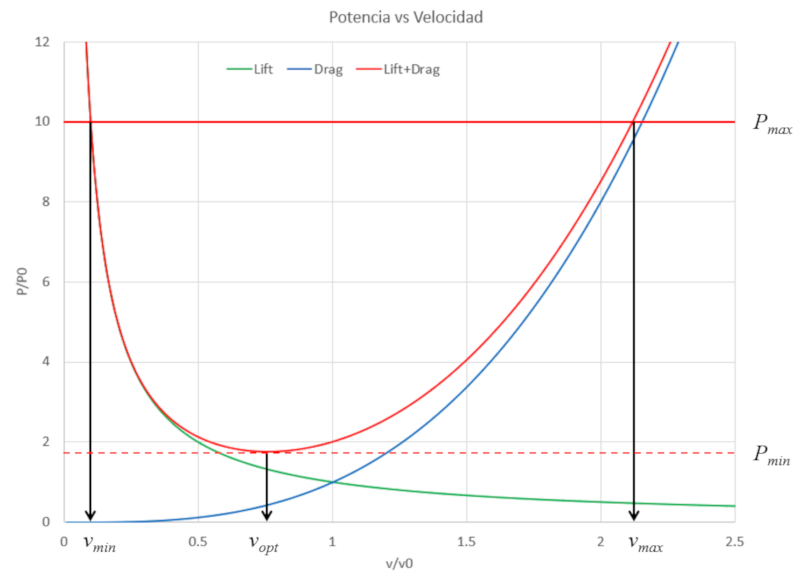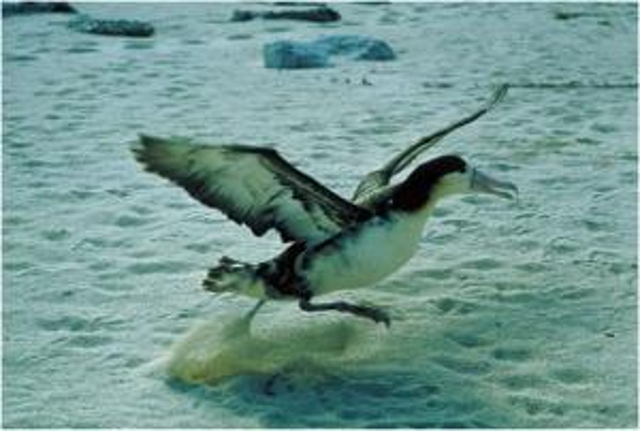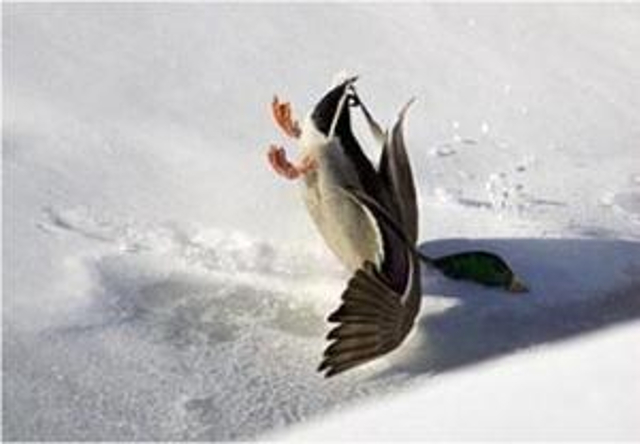Power
Storyboard 
Power is the energy per time that the object is capable of supplying (airplane / bird) and that limits the conditions of both flight, takeoff and landing.
For a finite power it is observed that there is a minimum takeoff speed and a maximum speed at which the object can be held in the air which limits takeoff and landing. Similarly, there is a maximum speed that can be reached that limits the attack and escape capacity of birds.
ID:(465, 0)
Flight power
Image 
The following diagram shows the two components of the total flight power. The first component corresponds to the high resistance encountered at low speeds due to the required angle of attack for generating sufficient lift. The second component illustrates how the power required for flight increases quite dramatically at higher speeds:

The sum of both curves represents the total power required as a function of flight velocity.
ID:(7039, 0)
Takeoff problem
Note 
Both airplanes and birds require reaching a minimum speed to be able to fly. Airplanes achieve this by accelerating on the runway for takeoff, while birds have the ability to run or drop themselves, for example, from a cable or branches where they have perched.

ID:(7040, 0)
Landing problem
Quote 
Both airplanes and birds have a speed limit below which they cannot fly. This means that during the landing process, there will always be a residual horizontal velocity, and it will be necessary to use brakes to come to a complete stop. In the case of higher speeds, a longer runway will be required, and it is crucial to be prepared for possible incidents or setbacks:

ID:(7041, 0)
